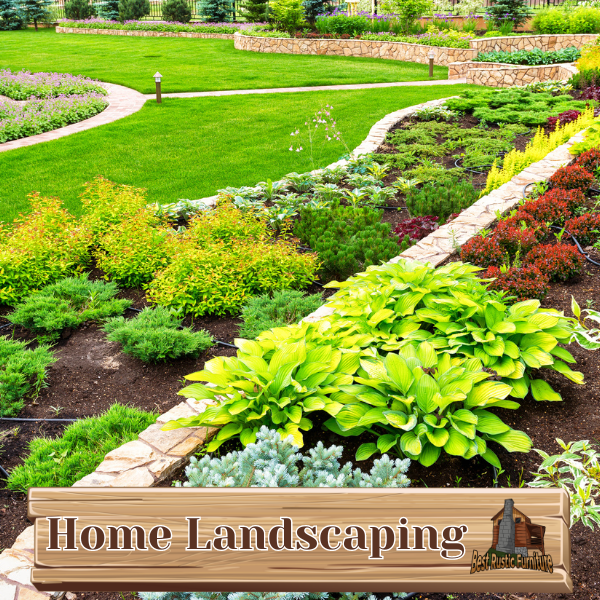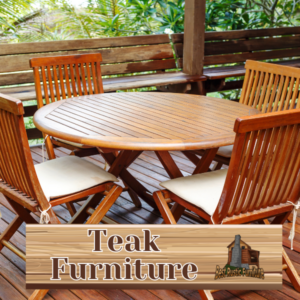
Landscaping and exterior home design go beyond just the four walls of your house. It involves creating a visually appealing and functional outdoor space that enhances your home’s curb appeal and creates a welcoming environment. According to landscape architects and designers, landscaping plays a crucial role in improving the overall value and energy efficiency of your property. It also allows you to stay up-to-date with the latest trends in sustainable landscaping and smart technology for outdoor spaces.
To start with landscaping, it is essential to understand the basics of landscaping design, such as selecting the right plants for your climate and creating a functional layout that suits your needs. Incorporating various landscaping elements like lawns, trees, flower gardens, and patios can transform your outdoor space into a beautiful extension of your home.
Beyond aesthetics, exterior design and landscaping can add value to your home. Well-maintained and thoughtfully designed outdoor spaces can increase the property’s value and appeal to potential buyers. Implementing energy-efficient landscaping techniques, such as strategic tree placement and water-wise irrigation systems, can help improve the overall energy efficiency of your home.
Keeping up with the latest trends in landscaping is also important. Sustainable landscaping practices, such as using native plants and incorporating eco-friendly features, are gaining popularity. Vertical gardening is another trend that maximizes space and adds a touch of greenery to even the smallest of areas. Furthermore, advancements in smart technology offer opportunities to automate and enhance the functionality of your outdoor spaces.
If you’re interested in tackling landscaping and exterior home design on your own, it’s crucial to gather inspiration and ideas from various sources. Creating a budget and plan will help you stay organized and ensure that your design aligns with your goals. Implementing and maintaining your design will require ongoing care and attention to keep your outdoor space looking its best.
By focusing on landscaping and exterior home design, you can enhance your property’s overall appeal, value, and energy efficiency while creating a beautiful and functional outdoor space to enjoy.
Key takeaways:
- Landscaping enhances curb appeal: Well-designed landscaping can significantly improve the appearance of a home, making it more attractive to potential buyers and increasing its value.
- Sustainable landscaping is a trend: Using native plants, conserving water, and incorporating eco-friendly features like rain gardens are popular choices for creating sustainable and environmentally-friendly outdoor spaces.
- Outdoor living spaces add value: Patios, decks, and other outdoor living areas provide additional usable space for entertaining and relaxation, making them desirable features that can increase the value of a home.
The Importance of Landscaping
Enhancing your home’s curb appeal and creating a warm, inviting environment is essential. In this section, we explore the importance of landscaping. Discover how landscaping can transform the external aesthetics of your home and make a lasting impression on visitors. From enhancing curb appeal to creating a welcoming atmosphere, we highlight the key elements that contribute to an outstanding exterior home design. So, let’s dive in and explore the world of landscaping and its significance in elevating your living space.
Enhancing Curb Appeal
Enhancing curb appeal is crucial for creating a welcoming and attractive exterior for your home. Here are some effective ways to improve curb appeal:
- Landscaping: Maintaining a well-manicured lawn, neatly trimmed shrubs, and colorful flower beds is key.
- Front Door: Upgrading your front door with a fresh coat of paint, stylish hardware, and a welcoming entrance mat enhances curb appeal.
- Lighting: By installing outdoor lighting fixtures, you can illuminate your pathways and highlight architectural features, enhancing curb appeal.
- Driveway and Walkways: It is important to keep them clean and well-maintained, repair any cracks, and consider adding decorative elements like pavers to enhance curb appeal.
- Exterior Paint: Refreshing the exterior paint of your home, choosing a color scheme that complements your landscaping, contributes to enhancing curb appeal.
Implementing these changes can significantly enhance your home’s curb appeal and make a lasting impression on visitors and potential buyers.
Creating a Welcoming Environment
Creating a welcoming environment through landscaping involves the intentional design of an inviting and warm atmosphere for your home. Here are some essential elements to consider to achieve this goal:
- Entryway: Designing an appealing entrance with well-maintained plants, beautiful flowers, and a pristine walkway.
- Lighting: Installing outdoor lighting fixtures to illuminate pathways and showcase significant features, thereby creating a welcoming ambiance during the night.
- Color Scheme: Selecting plants and flowers that harmonize with the exterior of your home, resulting in a visually pleasing color palette.
- Seating areas: Establishing inviting and cozy seating areas using comfortable outdoor furniture, enabling guests to relax and feel welcomed.
- Focal Points: Incorporating attention-grabbing elements like a water feature, sculpture, or intriguing landscaping design to capture attention and curiosity.
- Personal Touch: Adding personal touches such as decorative accents, outdoor artwork, or a welcoming doormat to infuse personality and charm into your home’s exterior.
The Basics of Landscaping Design
Looking to transform your outdoor space? Discover the key principles in landscaping design that can take your exterior home to the next level! In this section, we’ll dive into the basics of landscaping design, exploring how choosing the right plants and creating a functional layout can make a world of difference. Get ready to unleash your creativity and enhance the beauty and functionality of your outdoor oasis!
Choosing the Right Plants
When it comes to landscaping, the key to creating a beautiful and thriving outdoor space lies in choosing the right plants. It is essential to consider various factors when selecting plants that are well-suited to your specific needs.
- Climate: One of the primary considerations is the local climate and weather conditions. By choosing plants that are well-suited to your climate, you can ensure their survival and growth.
- Sunlight Exposure: Another crucial factor is determining the amount of sunlight the area receives. Whether it is full sun, partial sun, or shade, it is important to select plants that can thrive in such conditions.
- Soil Type: Different plants thrive in different soil types. Therefore, it is imperative to consider the soil composition of your garden. This will help you choose plants that will thrive in your specific soil type.
- Maintenance Requirements: Time availability is an important aspect to consider. It is essential to choose plants that match your willingness and ability to care for them. This will ensure that you can maintain and sustain them properly.
- Purpose: When selecting plants, it is crucial to think about what you want them to contribute to your landscape. Whether it is adding color, providing shade, or attracting wildlife, understanding the purpose will help you make suitable choices.
By taking into account these factors, you can confidently choose the right plants that will flourish in your specific outdoor environment and create a stunning landscape.
Creating a Functional Layout
Creating a well-planned and organized outdoor space is crucial when designing your landscape. Follow these steps to ensure a functional layout that meets your needs and preferences.
- Assess the space: Begin by taking measurements and analyzing the terrain of your landscape. This will help you understand the limitations and possibilities of the area.
- Define zones: Determine how you want to utilize the space and divide it into specific areas, such as dining, lounging, or play areas. This will allow for a more organized layout.
- Consider accessibility: It is important to plan pathways and walkways that provide easy and convenient movement throughout the landscape. This will improve the functionality of the outdoor space.
- Arrange focal points: Identify key features like water elements, seating areas, or garden beds. Strategically position them to create visual interest and achieve a balanced layout.
- Plan for seating: Incorporate comfortable seating options in different areas to accommodate outdoor activities and social gatherings. This will enhance the functionality of the space.
- Think about maintenance: When designing the layout, consider grouping plants with similar care needs and incorporating irrigation systems. This will minimize maintenance efforts, resulting in a more efficient design.
Landscaping Elements and Features
Discover the key elements and features of landscaping that can transform your outdoor space into a picturesque paradise. From lush lawns and vibrant flower gardens to majestic trees and inviting patios, this section covers it all. Learn how to create a harmonious blend of nature and design as we explore the enchanting world of landscaping. Get ready to unleash your creativity and elevate the beauty of your exterior with expert tips and inspiration.
Lawns and Groundcovers
Lawns and groundcovers play a crucial role in landscaping, providing a lush and vibrant look to the outdoor space. Consider these options to enhance your landscape:
- Lawn grass: Choose a type that suits your climate and maintenance preferences, such as Bermuda grass for warm regions or fescue for cooler areas.
- Groundcover plants: Opt for low-growing plants like creeping thyme or vinca minor to cover large areas and prevent soil erosion.
- Mulch: Use organic mulch like wood chips or bark to cover bare ground and retain moisture, while adding aesthetic appeal.
- Xeriscaping: Incorporate drought-tolerant groundcovers like sedum or yarrow to conserve water and reduce maintenance.
When Sarah transformed her backyard, she chose a combination of lush lawns and groundcovers. Not only did it create a stunning visual impact, but it also eliminated the need for excessive watering and mowing. Sarah’s landscape is now an inviting space for outdoor gatherings and a source of pride.
Trees and Shrubs
- Trees and shrubs are essential elements in landscaping, providing structure, privacy, and aesthetic appeal to outdoor spaces.
- When selecting trees and shrubs for your landscape, consider their growth habit, mature size, and maintenance requirements.
- Choose trees that are well-suited to your climate and soil conditions, such as oak or maple trees for shade or flowering trees like cherry or dogwood for visual interest.
- For shrubs, consider both evergreen and deciduous varieties for year-round color and texture. Examples of trees to consider are boxwood, hydrangeas, and azaleas.
- Ensure proper spacing and placement to allow for the growth of trees and shrubs and to avoid overcrowding.
- Maintain trees and shrubs by pruning, watering, and fertilizing as needed to promote healthy growth.
Flower Gardens and Planters
Flower gardens and planters are crucial components in landscaping and exterior home design, infusing outdoor spaces with beauty and vibrant hues. Here are some essential factors to consider when creating breathtaking flower gardens and planters:
- Choose the right flowers: Opt for flowers that flourish in your local climate and soil conditions. Take into account variables such as sun exposure, moisture levels, and maintenance requirements.
- Plan for variety: Incorporate a diverse array of flowers with different colors, heights, and textures to generate visual allure and add dimension to your garden or planter.
- Create focal points: Strategically position attention-grabbing flowers or planters throughout your landscape design to draw the eye and establish a focal point.
- Consider seasonal blooms: Devise a garden or planter arrangement that boasts blooming flowers all year round, ensuring a constant infusion of beauty and color.
Pro-tip: To maintain the fresh and vibrant appearance of your flower garden or planter, remember to regularly water, fertilize, and trim your plants as necessary.
Patios and Outdoor Living Spaces
When designing your outdoor space, it is essential to create functional and inviting patios and outdoor living spaces. Here are some key considerations to keep in mind:
- Size and Layout: Determine the size and layout of your outdoor living area, taking into account the available space and intended use of your patios and outdoor living spaces.
- Materials and Design: Choose durable materials such as stone or composite decking that can withstand outdoor elements. Consider incorporating design elements like seating areas, dining spaces, and fire pits into your patios and outdoor living spaces.
- Privacy and Shade: To create a secluded atmosphere, incorporate privacy elements such as hedges or fencing into your patios and outdoor living spaces. Additionally, consider adding shade solutions like pergolas, umbrellas, or retractable awnings to protect from direct sunlight.
- Lighting and Ambiance: Enhance the ambiance of your patios and outdoor living spaces by installing outdoor lighting fixtures. Consider incorporating features like string lights, lanterns, or pathway lighting to create a cozy atmosphere during evenings.
- Landscaping and Greenery: Surround your patios with lush plants and flowers to create a natural and inviting outdoor oasis. Maximize space by using potted plants, vertical gardens, or hanging baskets.
- Functionality and Comfort: Provide ample seating for gatherings and choose comfortable outdoor furniture that suits your style. Enhance functionality by incorporating features like outdoor kitchens, BBQ areas, or storage into your patios and outdoor living spaces.
Adding Value to Your Home through Exterior Design
When it comes to enhancing the value of your home, the power of exterior design should never be underestimated. In this section, we’ll explore two key aspects: increasing property value and improving energy efficiency. Discover how thoughtful landscaping can elevate your home’s curb appeal, enticing potential buyers and adding monetary worth. We’ll uncover practical tips for optimizing energy efficiency, saving you money while reducing your environmental impact. Get ready to unlock the secrets of exterior design that go beyond four walls.
Increasing Property Value
To increase the property value of your home, it’s essential to invest in landscaping and exterior home design. By focusing on a well-designed and well-maintained outdoor space, you can significantly impact the overall value of your property. Here are some effective ways to achieve this and attract potential buyers interested in sustainable landscaping:
| 1. Enhance curb appeal | by incorporating attractive features such as colorful flower gardens, well-maintained lawns, and eye-catching pathways. These elements will make your home stand out and create a positive first impression. |
| 2. Create a welcoming environment | by adding outdoor seating areas or a cozy fire pit. These additions will make the outdoor space more inviting and provide a comfortable area for relaxation or entertainment. |
| 3. Opt for low-maintenance plants and environmentally-friendly design practices. | This approach not only minimizes upkeep efforts but also appeals to buyers who value sustainable landscaping. |
Implementing these strategies will not only enhance the beauty of your home but also ensure that its value appreciates over time. Let’s take inspiration from a couple in a suburban neighborhood who transformed their backyard into a stunning oasis. They focused on creating a well-designed patio, lush gardens, and a serene water feature. When they eventually decided to sell their house, the beautifully landscaped backyard became the highlight of their property. Potential buyers were willing to pay a premium for a house with such an inviting and well-maintained outdoor space. The couple’s investment in landscaping not only increased their property value but also helped them sell their home quickly and at a higher price than anticipated. So, don’t underestimate the power of landscaping in raising the value of your property.
Improving Energy Efficiency
Improving energy efficiency in landscaping and exterior home design is crucial for reducing energy consumption and decreasing utility bills. To achieve this, follow these practical steps:
- Strategically plant shade trees to naturally block sunlight and minimize the need for air conditioning.
- Select drought-tolerant plants that demand less watering and irrigation.
- Opt for energy-efficient outdoor lighting options, such as LED lights, to minimize energy usage.
- Utilize permeable surfaces like gravel or porous pavers to enable rainwater infiltration, thus decreasing the need for irrigation.
- Create windbreaks using shrubs or fences to shield the house from chilly winds and minimize heat loss.
- Enhance insulation in outdoor structures like sheds or outdoor living spaces to prevent heat loss or gain.
Trends in Landscaping and Exterior Home Design
Get ready to discover the latest trends in landscaping and exterior home design! In this section, we’ll explore the exciting world of sustainable landscaping, the innovative concept of vertical gardening, and the game-changing smart technology for outdoor spaces. From eco-friendly practices to space-saving solutions, we’ll show you how these trends are transforming the way we design and enjoy our outdoor environments. So, let’s dive in and uncover the secrets to creating a stunning and modern exterior for your home!
Sustainable Landscaping
Sustainable landscaping is an eco-friendly approach to designing and maintaining outdoor spaces. By incorporating sustainable practices, such as water conservation, soil health, energy efficiency, wildlife habitat, and stormwater management, you can conserve natural resources, reduce pollution, and create a healthier environment.
- Water conservation: Use native plants and install drip irrigation systems to minimize water usage.
- Soil health: Add organic matter, such as compost, to improve soil fertility and promote healthy plant growth.
- Energy efficiency: Incorporate shade trees and strategically place vegetation to reduce the need for cooling in outdoor spaces.
- Wildlife habitat: Create wildlife-friendly areas by planting native species and providing food and shelter.
- Stormwater management: Install rain gardens or permeable paving to help capture and filter rainwater, preventing runoff and erosion.
Sustainable landscaping, which has been practiced for centuries, has gained significant attention in recent years. Ancient civilizations like the Ancient Egyptians and Romans also incorporated natural elements into their gardens. However, the focus on sustainable practices has grown due to the increasing awareness of environmental issues and the desire to create a greener future.
Vertical Gardening
- Vertical gardening is a popular trend in landscaping and exterior home design that allows you to maximize space and create beautiful green walls. Here are some key points to consider when practicing the art of vertical gardening.
- Choose the right plants: Opt for plants that are suitable for vertical growth, such as climbing vines, cascading flowers, or compact herbs. Vertical gardening relies on plants that can thrive in a vertical environment.
- Select the appropriate structure: Install trellises, wall-mounted planters, or a living wall system to provide support and ample space for your plants to grow upwards. The chosen structure plays a crucial role in the success of your vertical garden.
- Ensure proper irrigation: Implement a watering system that allows water to reach all levels of your vertical garden, ensuring the plants receive adequate hydration. Proper irrigation is vital for the health and growth of your plants.
- Regular maintenance: Prune and trim your plants as needed to maintain their shape and prevent overgrowth. Additionally, it is essential to monitor for pests or diseases and take prompt action if necessary. Regular maintenance of your vertical garden guarantees its longevity.
- Consider lighting conditions: Assess the amount of sunlight your vertical garden will receive and choose plants accordingly. Some plants may thrive in full sun, while others prefer shade. Understanding the lighting conditions is crucial for the health and vitality of your plants in a vertical gardening setup.
By incorporating vertical gardening into your landscaping design, you can transform a plain wall or small space into a vibrant and lush area. Vertical gardening maximizes the potential of your outdoor space and adds visual interest through its concept of green walls.
Smart Technology for Outdoor Spaces
Smart technology for outdoor spaces has completely transformed the way we interact with our outdoor environments, resulting in increased efficiency, convenience, and overall enjoyment. Let’s explore some examples of smart technology for outdoor spaces:
| 1. Smart Irrigation Systems: |
|---|
| These innovative systems utilize weather data to calculate and provide the precise amount of water required for plants, conserving water resources and preventing excessive watering. |
| 2. Outdoor Lighting: |
|---|
| With the help of smart lighting systems, you can effortlessly control and schedule outdoor lights from a remote location. This not only saves energy but also enhances the security of your outdoor area. |
| 3. Weather Monitoring: |
|---|
| By utilizing sensors and real-time weather data, smart technology can make adjustments to irrigation schedules, automatically close awnings, or retract pergolas based on the prevailing weather conditions. |
| 4. Automated Outdoor Entertainment: |
|---|
| Imagine having the ability to control smart outdoor speakers, TVs, and sound systems right from your fingertips. This seamless integration allows you to create a truly immersive and enjoyable entertainment experience in your backyard. |
| 5. Security Systems: |
|---|
| Smart outdoor security cameras, alarm systems, and motion sensors offer an added layer of protection, which can be easily monitored remotely. You can enjoy peace of mind knowing that your outdoor space is secure even when you are away. |
By incorporating smart technology into your outdoor spaces, you can significantly enhance convenience, save energy, and cultivate a more enjoyable and functional environment for yourself and your loved ones.
How to DIY Landscaping and Exterior Home Design
Are you ready to transform your outdoor space into a stunning oasis? In this section, we’ll explore the exciting world of DIY landscaping and exterior home design. From gathering inspiration to creating a budget and plan, and finally implementing and maintaining your design, we’ll guide you through each step of the process. Get ready to unleash your creativity and bring your outdoor dreams to life!
Gathering Inspiration and Ideas
To gather inspiration and ideas for landscaping and exterior home design, there are several avenues you can explore.
1. Visit local botanical gardens or parks to see different plant species and layouts in action.
2. Browse home design magazines and websites for photos and articles on landscaping trends and styles.
3. Attend home and garden shows or tours to get a firsthand look at well-designed outdoor spaces.
4. Utilize online platforms like Pinterest or Houzz to create mood boards and save images that inspire you.
5. Seek advice from landscaping professionals or consult with experienced friends and neighbors who have successfully transformed their outdoor spaces.
A couple looking to revamp their backyard found inspiration and ideas by visiting a nearby botanical garden. They were captivated by the beautiful arrangement of plants and the idea of incorporating a water feature into their design. This visit sparked their creativity, and they went on to create a stunning outdoor oasis in their own backyard, complete with lush plants, a tranquil pond, and a cozy seating area.
Creating a Budget and Plan
Creating a budget and plan is of utmost importance when embarking on landscaping and exterior home design projects. It is vital in ensuring that you remain within your financial limits while achieving your desired outcome. Here is a step-by-step guide to follow:
- Assess your finances and determine the amount you can afford to allocate.
- Conduct thorough research on the costs associated with the required materials, plants, and services.
- Prioritize and determine the key elements of your project that hold the highest significance to you.
- Develop a comprehensive plan that includes a timeline and budget for each individual component.
- Consider various alternatives and compare prices to maximize your budgetary allocation.
- Regularly review your plan and make necessary adjustments as required.
- Maintain meticulous tracking of your expenses throughout the entire project to remain on top of your budget.
By creating a budget and plan, you can ensure that your landscaping and exterior home design project remains on financially stable ground and brings forth the exact outcomes you envision.
Implementing and Maintaining Your Design
Implementing and maintaining your landscaping design requires careful planning and consistent upkeep. Here are the steps to follow:
- Prepare the area: Clear any existing vegetation and level the ground.
- Install hardscaping elements: Lay patios, pathways, and other desired features.
- Plant trees and shrubs: Choose native plants that thrive in your climate.
- Create flower beds: Add colorful flowers and plants to enhance the aesthetic appeal.
- Add mulch: Apply a layer of mulch to retain moisture and discourage weed growth.
- Install irrigation: Set up a system to ensure plants receive adequate water.
- Maintain regularly: Prune plants, trim trees, and remove weeds regularly.
- Water and fertilize: Provide water and nutrients as needed to promote healthy growth.
- Protect from pests: Monitor for pests and take appropriate measures to control them.
- Adjust as needed: Evaluate your design periodically and make adjustments based on growth and changing preferences.
Some Facts About Beyond Four Walls: Landscaping and Exterior Home Design:
- ✅ The “beyond my four walls” collection on Pinterest consists of 115 pins. (Source: Our Team)
- ✅ The collection was created 29 weeks ago and focuses on garden design, garden projects, and landscaping. (Source: Our Team)
- ✅ Pins in the collection offer inspiration for garden decoration, landscaping, and perennial placement. (Source: Our Team)
- ✅ The “The Beauty Beyond My Four Walls” collection on Pinterest curated by Samantha AlKhawaldah features pins related to outdoor living, architecture, and home renovation. (Source: Our Team)
- ✅ The pins in the collection showcase a variety of design styles including farmhouse, contemporary, Mediterranean, and Spanish. (Source: Our Team)
Frequently Asked Questions
What are some design trends for farmhouse style houses?
Some design trends for farmhouse style houses include incorporating textural delights using earth tones and captivating textures, integrating the natural world into home designs, and creating a sense of serenity.
How can I create an indoor-outdoor living space?
To create an indoor-outdoor living space, you can design outdoor living areas with cozy lounges, fully equipped kitchens, and tranquil gardens. This allows for a seamless transition between the indoor and outdoor areas of your home.
What is the fusion of past and present in home design?
The fusion of past and present in home design involves combining elements from different eras to create a timeless design. This can be achieved through the use of reclaimed wood accents, vintage-inspired decor, and incorporating modern contemporary home designs.
What are some captivating textures that can be incorporated into home designs?
Some captivating textures that can be incorporated into home designs include earth tones, warming neutrals, and a variety of materials such as reclaimed wood, stone, and metal.
How can I achieve a sense of timeless elegance in my home?
To achieve a sense of timeless elegance in your home, you can incorporate elements of the past and present, utilize quality craftsmanship, and focus on creating a warm and inviting atmosphere.
What is Peachtree Residential known for in their single-family builds?
Peachtree Residential is known for their focus on quality craftsmanship, innovative designs, and customer satisfaction in their single-family builds. They strive to create homes that are not only beautiful but also functional and comfortable for homeowners.






